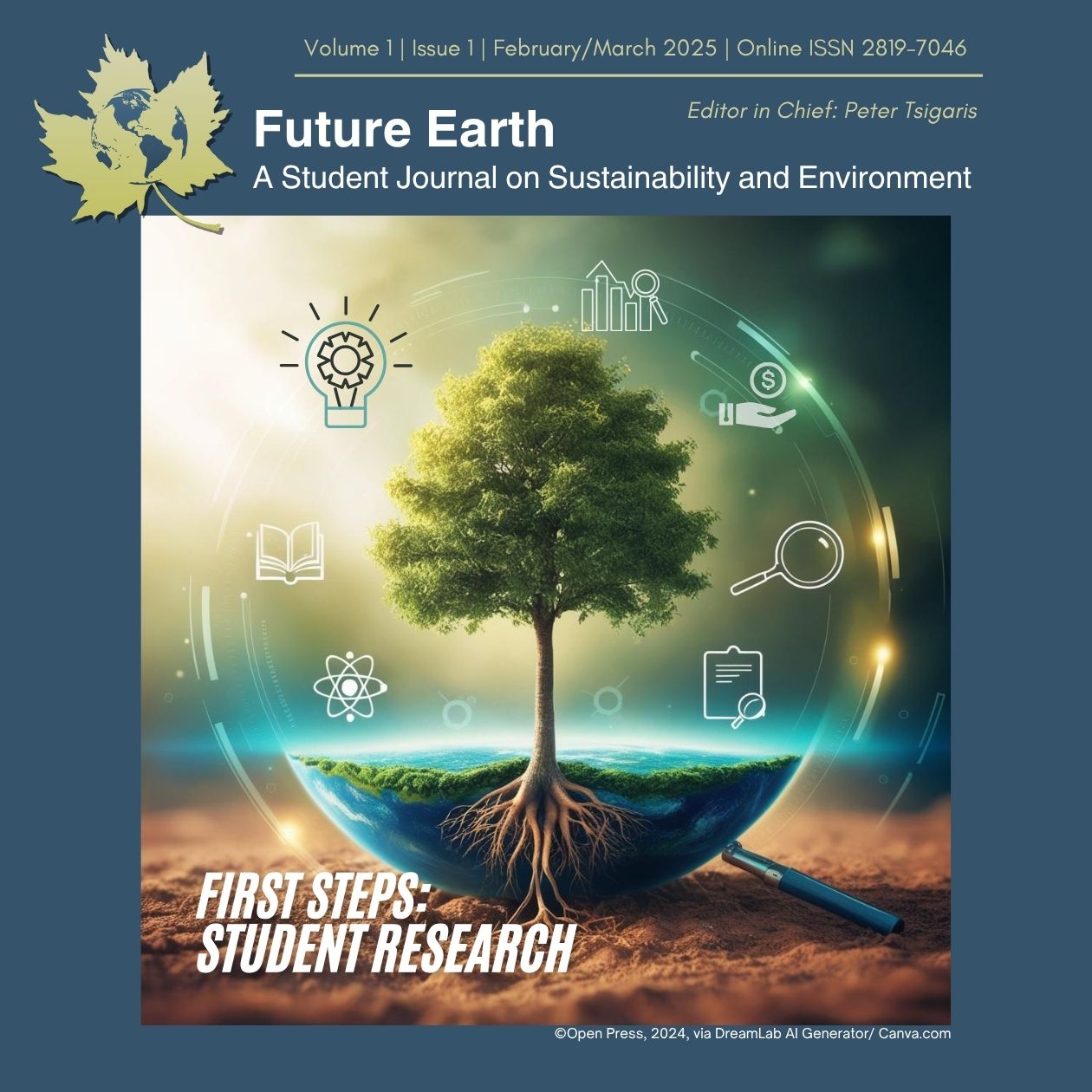How Old-Growth Forest Conservation Policies Support Caribou Recovery in British Columbia
DOI:
https://doi.org/10.29173/bcelnfe710Keywords:
policy review, old growth forest, british columbia, Economics of Conservation, caribou populationAbstract
This research examines the critical policy intersection between old-growth forest preservation and caribou conservation strategies in British Columbia. Caribou depend heavily on old-growth forests for lichen, their primary food source. In response, British Columbia has implemented policies aimed at protecting old-growth ecosystems, thereby indirectly safeguarding caribou habitats. While alternative methods such as predator control (e.g., wolf reduction) and maternal penning provide short-term conservation gains, long-term caribou recovery requires substantial protection of old-growth forests. However, expanding conservation efforts entails significant opportunity costs, particularly the loss of logging revenues that remain vital to the provincial economy. To explore these dynamics, this study applies a simple extinction model to evaluate the impact of different forest management scenarios on caribou population trajectories. Through a comprehensive review and critical analysis of current forest preservation policies, the study identifies key gaps and proposes strategic enhancements to strengthen conservation efforts. The findings emphasize that preserving old-growth forests not only supports caribou survival but also enhances British Columbia’s ecosystem services and long-term ecological resilience.
Keywords: caribou population, policy review, old-growth forest, British Columbia, economics of conservation
References
Ancient Forest Alliance. (n.d.). Provincial old growth protection strategy. https://ancientforestalliance.org/our-work/old-growth-campaigns/provincial-old-growth-protection-strategy/
BC Parks. (n.d.). Upper Seymour River Park. Province of British Columbia. https://bcparks.ca/upper-seymour-river-park/
Central Chilcotin Rehabilitation Ltd. (2025, February 4). How First Nations are rehabilitating 'predator super-highways' in the Cariboo for the caribou. Canadian Biomass Magazine. https://www.canadianbiomassmagazine.ca/how-first-nations-are-rehabilitating-predator-super-highways-in-the-cariboo-for-the-caribou/
Cichowski, D., Sutherland, G., Mcnay, R., & Sulyma, R. (2022). Direct and indirect effects of habitat disturbances on Caribou terrestrial forage lichens in Montane Forests of British Columbia. Forests 2022, 13(2), 251. https://doi.org/10.3390/f13020251
Conn, P., Thorson, J., & Johnson, D. (2017). Confronting preferential sampling when analysing population distributions: diagnosis and model‐based triage. Methods in Ecology and Evolution, 8. https://doi.org/10.1111/2041-210X.12803
Cox, S. (2022, November 25). BC Timber Sales plans to log old-growth rainforest, home to endangered caribou herd. The Narwhal. https://thenarwhal.ca/bc-logging-endangered-caribou-habitat/
CPAWS Northern Alberta. (2024, May 22). Alberta and Ontario lag on threatened boreal caribou recovery, federal report illustrates. https://cpawsnab.org/all-news/alberta-and-ontario-lag-on-threatened-boreal-caribou-recovery-federal-report-illustrates/
Cruickshank, A., & Wood, S. K. (2024, June 14). This new provincial park is the largest created in B.C. in a decade. The Narwhal. https://thenarwhal.ca/klinse-za-twin-sisters-provincial-park-bc/
Ehlers, L. P., Johnson, C. J., & Seip, D. R. (2016). Evaluating the influence of anthropogenic landscape change on wolf distribution: Implications for woodland caribou. Ecosphere, 7(12). https://doi.org/10.1002/ecs2.1600
Environment Canada. (2014). Recovery strategy for the woodland caribou, boreal population (Rangifer tarandus caribou) in Canada. Species at Risk Act Recovery Strategy Series. Environment Canada. https://www.canada.ca/en/environment-climate-change/services/species-risk-public-registry/recovery-strategies/woodland-caribou-rangifer-tarandus-caribou-boreal-proposed-2011.html
Fortin, D., Barnier, F., Drapeau, P., Duchesne, T., Dussault, C., Heppell, S., Prima, M., St‐Laurent, M., & Szor, G. (2017). Forest productivity mitigates human disturbance effects on late-seral prey exposed to apparent competitors and predators. Scientific Reports, 7. https://doi.org/10.1038/s41598-017-06672-4
Frankham, R., Bradshaw, C. J. A., & Brook, B. W. (2014). Genetics in conservation management: Revised recommendations for the 50/500 rules, red list criteria and population viability analyses. Biological Conservation, 170, 5663. https://doi.org/10.1016/j.biocon.2013.12.036
Gorley, A. & Merkel, G. (2020). A new future for old forests: From review to action: A report out on actions toward resilient ecosystems, communities and economies in B.C. [PDF]. https://www2.gov.bc.ca/assets/gov/farming-natural-resources-and-industry/forestry/stewardship/old-growth-forests/strategic-review-20200430.pdf
Government of British Columbia. (2009). 2009 Southern interior forest region: Forest health overview [PDF]. https://www2.gov.bc.ca/assets/gov/environment/research-monitoring-and-reporting/monitoring/aerial-overview-survey-documents/2009_sifr_fh_overview_booklet.pdf
Government of British Columbia. (2016, February). ILRR Quick reference guide forest data ... [PDF] - gov.bc.ca. https://www2.gov.bc.ca/assets/gov/data/geobc/ilrr-qr-forest-data.pdf
Government of British Columbia. (2022, April 11). Northeast economies get $10-million boost [news release]. BC Gov News. https://news.gov.bc.ca/releases/2022LWRS0001-000539
Government of British Columbia. (2024, December 4). Old growth forests. https://www2.gov.bc.ca/gov/content/industry/forestry/managing-our-forest-resources/old-growth-forests
Government of British Columbia. (2024, May). From review to action: A new future for old forests. https://www2.gov.bc.ca/assets/gov/farming-natural-resources-and-industry/forestry/stewardship/old-growth-forests/from_review_to_action.pdf
Government of British Columbia. (2025, January 30). Old growth deferral areas. Province of British Columbia. https://www2.gov.bc.ca/gov/content/industry/forestry/managing-our-forest-resources/old-growth-forests/deferral-areas
Government of British Columbia. (2025, March 12). Caribou herd locations for BC. Open Government Portal. https://open.canada.ca/data/en/dataset/2b217585-f48d-4d9f-b7ba-746909ac35ca
Government of British Columbia. (n.d.). Cariboo region in BC [Web map]. Government of British Columbia. https://governmentofbc.maps.arcgis.com/apps/MapSeries/index.html?appid=60eef687ed3a44a1881b1b79e47c7f41
Government of British Columbia. (n.d.). History of the mountain pine beetle infestation. https://www2.gov.bc.ca/assets/gov/farming-natural-resources-and-industry/forestry/forest-health/bark-beetles/history_of_the_mountain_pine_beetle_infestation.pdf
Government of British Columbia. (n.d.). Wildlife species inventory survey summary. B.C. Data Catalogue. https://catalogue.data.gov.bc.ca/dataset/wildlife-species-inventory-survey-summary-publicly-available
Hebblewhite, M., White, C. A., Nietvelt, C. G., McKenzie, J. A., Hurd, T. E., Fryxell, J. M., Bayley, S. E., & Paquet, P. C. (2010). Human activity mediates a trophic cascade caused by wolves. Ecology, 86(8), 2135-2144. https://doi.org/10.1890/04-1269
Hervieux, D., Hebblewhite, M., DeCesare, N. J., Russell, M., Smith, K., & Boutin, S. (2020). Cumulative effects and boreal woodland caribou: How bow-tie risk analysis addresses a critical issue in Canada's forested landscapes. Frontiers in Ecology and Evolution, 8, 1–17. https://doi.org/10.3389/fevo.2020.00001
James, A., & Stuart-Smith, A. (2000). Distribution of caribou and wolves in relation to linear corridors. Journal of Wildlife Management, 64, 154159. https://doi.org/10.2307/3802985
Johnson, C. J., Mumma, M. A., & St‐Laurent, M. (2019). Modeling multispecies predator–prey dynamics: Predicting the outcomes of conservation actions for woodland Caribou. Ecosphere, 10(3). https://doi.org/10.1002/ecs2.2622
Kutz, S., & Tomaselli, M. (2019). “Two-eyed seeing” supports wildlife health. Science, 364, 11351137. https://doi.org/10.1126/science.aau6170
Lande, R. (1988). Genetics and demography in biological conservation. Science, 241(4872), 14551460. https://doi.org/10.1126/science.3420403
Lindsay, B. (2024, April 8). B.C. to allow logging in endangered caribou habitat despite conservation efforts. The Narwhal. https://thenarwhal.ca/bc-logging-endangered-caribou-habitat/
Maher, S. M., Fenichel, E. P., Schmitz, O. J., & Adamowicz, W. L. (2020). The economics of conservation debt: a natural capital approach to revealed valuation of ecological dynamics. Ecological Applications, 30(6): e02132. https://doi.org/10.1002/eap.2132
Maltman, J. C., Coops, N. C., Rickbeil, G. J., Hermosilla, T., & Burton, A. C. (2024). Quantifying forest disturbance regimes within caribou (Rangifer tarandus) range in British Columbia. Scientific Reports, 14(1). https://doi.org/10.1038/s41598-024-56943-0
McKinnon, G. (1996). A mountain caribou strategy for British Columbia. Rangifer, 16, 149152. https://doi.org/10.7557/2.16.4.1236
Mcnay, R., Lamb, C., Giguere, L., Williams, S., Martin, H., Sutherland, G., & Hebblewhite, M. (2022). Demographic responses of nearly extirpated endangered mountain caribou to recovery actions in central British Columbia. Ecological Applications, 32. https://doi.org/10.1002/eap.2580
Ministry of Forests. (2024, May 21). Old growth definitions and values. Province of British Columbia. https://www2.gov.bc.ca/gov/content/industry/forestry/managing-our-forest-resources/old-growth-forests/old-growth-values
Newsome, T., Brown, K., & Nemec, A. (2016). Effects of opening size and microsite on performance of planted tree seedlings in high-elevation Engelmann spruce–subalpine fir forests managed as mountain caribou habitat in British Columbia. Forest Ecology and Management, 370, 3144. https://doi.org/10.1016/J.FORECO.2016.03.001
Parks Canada. (2023, March 22). Caribou. Glacier National Park. https://parks.canada.ca/pn-np/bc/glacier/nature/faune-flore-fauna-flora/caribou
Rochefort, R. (2024, September 16). Why caribou conservation in BC is tricky business. The Ubyssey. https://ubyssey.ca/science/why-caribou-conservation-in-bc-is-tricky-business/
Shaffer, M. L. (1981). Minimum population sizes for species conservation. BioScience, 31(2), 131134. https://doi.org/10.2307/1308256
Stevenson, S. (1990). Managing second-growth forests as caribou habitat. Rangifer, 10, 139144. https://doi.org/10.7557/2.10.3.844
Taylor, M. S., & Weder, R. (2024). On the economics of extinction and possible mass extinctions. Journal of Economic Perspectives, 38(3), 237-260. http://doi.org/10.1257/jep.38.3.237
Traill, L. W., Bradshaw, C. J. A., & Brook, B. W. (2007). Minimum viable population size: A meta-analysis of 30 years of published estimates. Biological Conservation, 139(1-2), 159166. https://doi.org/10.1016/j.biocon.2007.06.011
Verde, J. (2023, December 12). New Indigenous-led, BC old growth forest program. Happy Eco News. https://happyeconews.com/new-indigenous-led-bc-old-growth-forest-program/
Waterhouse, M. J., & Armleder, H. M. (2005). Itcha-Ilgachuz alternative silvicultural systems project 1995-2005: Research update (Extension Note 02) [PDF]. B.C. Ministry of Forests and Range, Southern Interior Forest Region. https://www.for.gov.bc.ca/hfd/Pubs/RSI/FSP/EN/RSI_EN02.pdf
Watt, J. (2024, September). One last shot to protect old-growth forests in British Columbia [Video]. TED. https://www.youtube.com/watch?v=enF8Zf4EPNg
Winder, R. S., Nebel, S., Stewart, F., McIntire, E., Dyk, A., Beaudoin, N., Boczulak, H., Dabros, A., Campbell, E., & Omendja, K. (2021). Using the bowtie risk assessment tool (BRAT) for analysis of ecological threats (Information Report BC-X-456). Natural Resources Canada, Canadian Forest Service, Pacific Forestry Centre. https://publications.gc.ca/collections/collection_2023/rncan-nrcan/Fo143-2-456-eng.pdf
Published
How to Cite
Issue
Section
Categories
License
Copyright (c) 2025 Future Earth: A Student Journal on Sustainability and Environment

This work is licensed under a Creative Commons Attribution-NonCommercial-ShareAlike 4.0 International License.
Authors retain copyright and grant the journal the right of first publication, with the work licensed under a Creative Commons Attribution-NonCommercial-ShareAlike (CC BY-NC-SA) License. This license allows others to share and adapt the work, provided proper attribution is given to the original author and the work's initial publication in this journal, and that it is used for non-commercial purposes under the same terms. Authors may also enter into separate, additional agreements for the non-exclusive distribution of the journal's published version of the work (e.g., posting it to an institutional repository or including it in a book), with proper acknowledgement of its original publication in this journal.
Authors are encouraged to post their work online (e.g., in institutional repositories or on their personal websites) both prior to and during the submission process, as this can foster productive exchanges and increase the visibility and citation of their work (See The Effect of Open Access).



